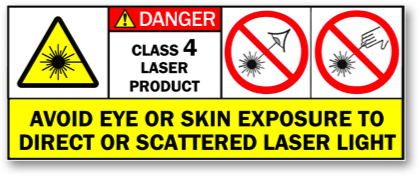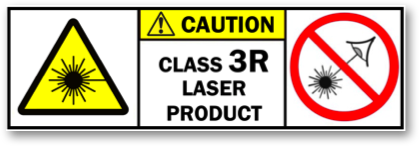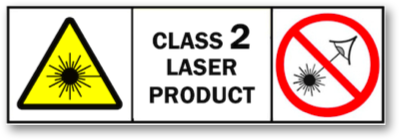Lots of laser pointer and laser alignment are available with different wavelength range in spectrum. The risk level varies from different part of the spectrum. Below shares hazards of laser pointers with different wavelength: Far IR (more than 2500nm) Infrared radiation with wavelength longer than 2500nm is stopped by the cornea. This IR laser has very low…
Category: Knowledge
Industrial Alignment Lasers
Industrial alignment laser is easily assembled and operation, which can be operated by batteries or DC input power supply. Employed by stable laser diode, inner circuit board, and durable aluminum alloy body material, industrial alignment lasers can be widely used in auxiliary positioning fire forming machines, paper cutting machines, steel sawing machines, PCB board cutting…
Laser Pointers Detailed Explanation
Laser pointers are usually used as an eye-catching point in education, business presentation, and visual demonstrations. Red laser pointer can be used in almost any indoor or low light situations, pointing out details by hand may be convenient. Green laser pointer can be used for astronomy enthusiasts. Green laser beam in moonless light, often can…
532nm Glass Lens Green Laser Line Generator
When highly visible and bright green laser beam is generating from 532nm glass lens green laser line generator, it is not only able to make super rapid and accurate line alignment on various working surfaces, but also getting the best line aligning result while comparing with other visible laser devices. Owing to its great equipment…
Class 4 (IV) Laser Safety Information
WHAT IS A CLASS 4 LASER? Class 4 lasers are hazardous for eye exposure. They also can burn skin and materials, especially dark and/or lightweight materials at close range. They should be used with extreme care. For visible-light lasers, Class 4 lasers’ have an output power 500 milliwatts and above. There is no upper limit…
Class 3B (IIIB) Laser Safety Information
WHAT IS A CLASS 3B LASER? Class 3B lasers are hazardous for eye exposure. They can heat skin and materials but are not considered a burn hazard. For visible-light lasers, Class 3B lasers’ output power is between 5 and 499 milliwatts. Class 3B Laser Pointer is the same as the Roman numeral “Class IIIb” you may see…
Class 3A (IIIA) Laser Safety Information
WHAT IS A CLASS 3A LASER? Class 3A lasers are considered safe when handled carefully. There is only a small hazard potential for accidental exposure. For visible-light lasers, Class 3A lasers’ output power is between 1 and 4.99 milliwatts. Class 3A Laser Pointer is essentially the same as the Roman numeral “Class IIIA” you may see on…
Class 2 (II) Laser Safety Information
WHAT IS A CLASS 2 LASER? Class 2 lasers are considered safe for normal operation. Class 2 lasers’ output power is below 1 milliwatt. All class 2 laser pointer emit visible light only. Class 2 is the same as the Roman numeral “Class II” you may see on some lasers’ labels. A Class ii laser is relatively…
About Laser Classes
Lasers are classified for safety purposes based on their potential for causing injury to humans’eyes and skin. Most green laser pointers products are required by law to have a label listing the Class. It will be listed either in Arabic numerals (1 2, 3A, 3B, 4) or in Roman numerals (I, II, IIIA, IIIB, IV). Classe 1…
When does a laser pointer get powerful enough to be dangerous?
There is no specific threshold between a powerful laser beam, a potentially hazardous one, and a clearly dangerous beam. The following are some guidelines. Bright Light Hazard Even a 5 milliwatt laser pointer can be a potential hazard if the green laser light distracts or temporarily flashblinds a person such as a pilot. This is why you…




